There are more than a dozen types of salt, from pink Himalayan to Persian blue. Here’s what you need to know so you can choose wisely.
15 Types of Salt, and How to Choose the Best Salt for You
We all need salt to survive. But there are so many types of salt out there. Which ones are healthiest? Which should I avoid? What about taste and cost?
Is there a salt that makes my food look like it’s been dusted with precious gemstones? Do you have a salt that’s made from volcanoes? I’ve got the answers to these, and other questions. So pop some popcorn, or bake a potato, because we’re about to get real salty in here.
Types of Salt: Highly Processed Salts
Table Salt
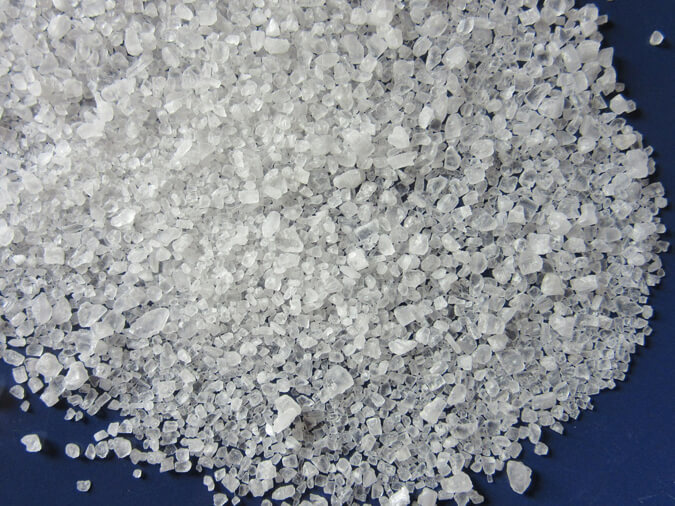
Table salt is 97–99% sodium chloride. During the refining process, trace minerals and other naturally occurring substances have been removed. Anti-caking agents are added to prevent the salt from clumping together. Iodine is often added, as well. Have you ever wondered why?
Iodine is an important element for proper thyroid function.1)Chung, Hye Rim. “Iodine and Thyroid Function.” Annals of pediatric endocrinology & metabolism. The Korean Society of Pediatric Endocrinology, March 2014. https://www.ncbi.nlm.nih.gov/pmc/articles/PMC4049553/. A deficiency in iodine can lead to cognitive problems, decreased energy level, and weight gain.2)Rohner, Fabian, Michael Zimmermann, Pieter Jooste, Chandrakant Pandav, Kathleen Caldwell, Ramkripa Raghavan, and Daniel J Raiten. “Biomarkers of Nutrition for Development–Iodine Review.” The Journal of nutrition. American Society for Nutrition, August 2014. https://www.ncbi.nlm.nih.gov/pmc/articles/PMC4093988/.3)Raman, Ryan. “10 Signs and Symptoms of Iodine Deficiency.” Healthline. Healthline Media, November 11, 2017. https://www.healthline.com/nutrition/iodine-deficiency-symptoms. Processed foods are typically devoid of iodine, so to get iodine back into our diets, manufacturers add it to our salt. The salt preserves the iodine. And because everyone uses salt, we all get some iodine back into our diets.
You May Also Enjoy:
“How to Make and Use Apple Cider Vinegar”
“Oatstraw Benefits: Stress Reliever, Love Potion, Brain Booster, and More”
Eating unprocessed foods, especially seaweed, is a more natural way of getting iodine. Also, trying to get all of your iodine from salt can lead to unhealthy sodium levels in the body.
Many people find that they have a strong craving for salty foods. This may be at least partially due to the highly processed nature of table salt and other modern foods. In nature, salt isn’t just sodium chloride. It’s a mixture of minerals. Your craving for salty foods may be your body’s way of asking for more minerals. But processed salt is devoid of these minerals. We keep consuming and craving the salt, but the mineral deficiency remains.
Table salt isn’t all bad in limited amounts, especially if you’re eating other whole foods with a good mineral content. It’s also very affordable. But it’s probably the least healthy salt on this list.
Popcorn Salt

Popcorn salt is just regular table salt. The only difference is that the salt grains are smaller. This allows them to get stuck more easily in the little pockets and curves of the popcorn. You can make your own by taking table salt, or another kind of salt, and pulsing it in a coffee grinder.
Kosher Salt
Kosher salt gets its name from its usage in preparing kosher meats. It has a larger size than regular table salt, with coarse, irregular-shaped crystals. Kosher salt also lacks additives, making it a bit more natural than regular table salt. However, it also lacks iodine. Cooks often prefer kosher salt due to its mild flavor.
Pickling Salt
Pickling salt is a type of salt used in brines to pickle various foods. It does not contain additives, including iodine. This lack of additives keeps the brine liquid from becoming cloudy.
Types of Salt: Minimally Processed Salts
Sea Salt
Sea salt is made from evaporated sea water. It contains various trace minerals, and is generally considered to be a healthier option than regular table salt.4)Axe, Josh. “Sea Salt: Top 6 Health Benefits & Himalayan vs. Celtic.” Dr. Axe, October 12, 2018. https://draxe.com/nutrition/10-benefits-celtic-sea-salt-himalayan-salt/. However, water pollution could be a concern. Most sea salt has to go through an inspection by the FDA, though this may not satisfy everyone. It’s probably best if you know where your sea salt is coming from.
Pink Himalayan Salt
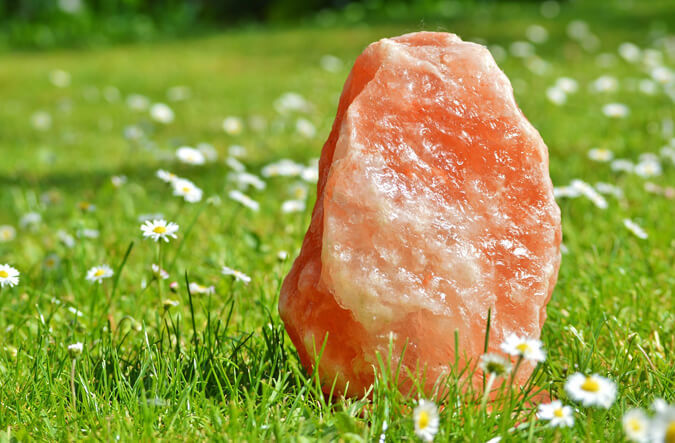
Pink Himalayan salt contains many trace minerals, and gets its color from the iron content. As the name implies, Himalayan salt comes from the foothills of the Himalayan mountains. Being a land-based salt eliminates the possibility of water pollution that can be a concern with sea salts. It’s more expensive than table salt, but this type of salt is also considered healthier.5)Axe, Josh. “Sea Salt: Top 6 Health Benefits & Himalayan vs. Celtic.” Dr. Axe, October 12, 2018. https://draxe.com/nutrition/10-benefits-celtic-sea-salt-himalayan-salt/.
Pink Himalayan salt is also used in lamps. These lamps are said to purify the air and boost your mood.6)Axe, Josh. “7 Warning Signs Your Salt Lamp Is an Imposter.” Dr. Axe, August 7, 2019. https://draxe.com/health/himalayan-salt-lamp/.
Fleur de Sel
This salt, translated literally as “flower of salt,” is considered by many to be the peak of sea salts. It’s also a very expensive sea salt, produced by a manual scraping process.
Gourmet salts like this one, and the ones to follow, each have their own flavor. Because they’re relatively unrefined, they will contain bits of matter from the regions they are harvested from. This gives each one a sort of personality. (I’ve tasted fleur de sel before. My opinion? It was salty. I may not be the best person to ask….)
Celtic Sea Salt
This salt comes from the Celtic Sea in Brittany, France. It’s harvested via a 2,000-year-old method, and has more iron and less sodium than many other salts. Celtic Sea salt comes from the same region of France as fleur de sel. These people really take their salt seriously.
You May Also Enjoy:
“Foraging for Wild Grapes (+My Old Family Recipe for Grape Hull Preserves!)”
“The Grapes of Youth: 11+ Age-Defying Reasons to Love This Plant”
Black Salt
Black salt isn’t actually black. It’s pinkish-grey. Black salt, also known as Kala Namag, is mined in India, and is commonly used in Southeast Asia. It has a strong sulpher smell and is becoming popular among vegan cooks due to its egg-like flavor.
Hawaiian Black Lava Sea Salt
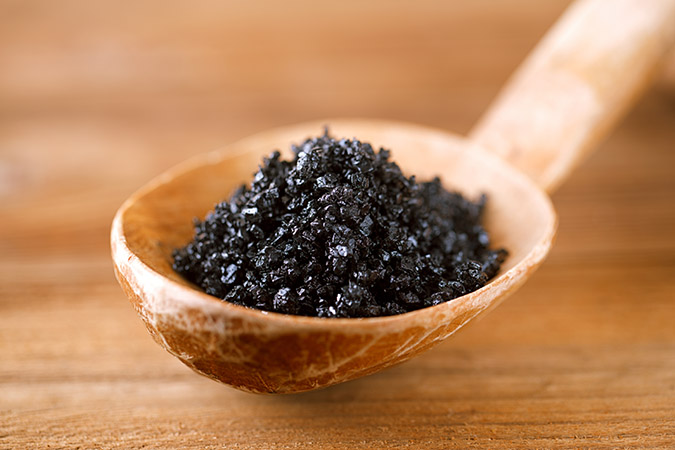
This black salt really is black. It’s also one of the most unexpected types of salt on this list. Hawaiian black lava sea salt is made from evaporated seawater which is mixed with volcanic rocks. Have you ever wanted to sprinkle some volcano on your food? The volcanic rock contains activated carbon, which is used for detoxification and to aid digestion.7)Axe, Josh. “Activated Charcoal Removes Toxins, Whitens Teeth and More!” Dr. Axe, July 5, 2019. https://draxe.com/nutrition/activated-charcoal-uses/.
Hawaiian Red Salt
Hawaiian red salt is a mineral-rich sea salt said to contain 80 different minerals. It gets the color from its very high iron content. It is formed when seawater is trapped in tidal pools of red clay, and then evaporated. Hawaiian red salt has a mild taste and is highly prized by cooks. One downside is that Hawaiian red salt is typically expensive.
Persian Blue Salt
Persian blue salt is possibly the rarest type of salt in the world. It is mined from only one place in the world: Garmsmar City, Iran. If you really want to impress your friends, this is the salt for you. But be prepared to shell out some cash.
This salt is typically added after cooking, so people can appreciate the unusual color. The blue-purple color comes from sylvanite, a potassium mineral. Persian blue also contains other minerals, such as calcium, magnesium, and iron.
You May Also Enjoy:
“Organic Wine That Actually Tastes GOOD!”
“Mustard Greens: What You Need to Know Before You Grow (With Recipe)”
Special Cases
Epsom Salt
Epsom salt is composed of magnesium sulfate. It is not a food salt, though it is sometimes used internally for its laxative and detoxifying properties. Epsom salt can also be used to perk up undernourished plants. Dissolve 2 tablespoons of Epsom salt into 1 gallon (3.79 liters) of water for a supplemental plant feeding. Don’t sprinkle it on your baked potatoes!
Herb Salts

Herb salts are a combination of salt and any culinary herb. A common example is celery salt, but you can use any herb or combination of your choice. Herb salts are delicious and easy to make. There are several different techniques. One method is to place 1 part fresh herbs into a food processor and add 1/3 part salt. Use whichever type of salt your prefer. Pulse this mixture a few times, then taste the result. Keep adding salt in small amounts until it reaches the desired saltiness.
Spread out your herb salt on a sheet and let it air dry for a day or two. Alternately, you can place the herb salt in the oven on its lowest setting and let it dry for an hour or two, stirring partway through.
You May Also Enjoy:
“How to Eat Acorns: The Absolute Easiest Way”
The salt will help keep the herbs dry and prevent them from spoiling.
Common herb choices include rosemary, parsley, celery, oregano, thyme, cilantro, dill, basil, and peppermint. But don’t neglect more uncommon options, such as lavender, juniper berries, and rose petals. You could also make an herb salt with seaweed. This would replace some of the sodium chloride with potassium chloride. Read below for an explanation.
Potassium Salt

Remember how I said that table salt is sodium chloride? Well, potassium salt is potassium chloride. It can be found in some natural foods, and has a strong salty taste. You can replace some of your sodium with potassium salts, to reduce the effects of excess sodium intake.8)“Potassium Salt Substitutes.” LIVESTRONG.COM. Leaf Group. Accessed March 21, 2020. https://www.livestrong.com/article/112551-potassium-salt-substitutes/. Potassium is also good for your heart and can help to remove excess sodium from your body. Just remember to leave some sodium in your diet. Sodium is an important element for your body.
You May Also Enjoy:
“Sodium for Survival: 8 Ways to Find This Essential Nutrient in the Wilderness”
Seaweed is the best natural source of potassium salt. As a bonus, seaweed contains several other important elements, such as magnesium, calcium, and iodine. Seaweed also contains natural glutamates, which enhance the taste of food.
What Do You Think?
I hope we got salty enough for you. If you have any experiences with, or preferences for, any of the types of salt on the list, let us know. Or if I left out your favorite type of salt, be sure to mention it in the comments.
_________________________
This is an updated version of an article that was originally published on April 6, 2020. The author may not currently be available to respond to comments, however we encourage our Community members to chime in to share their experiences and answer questions!
The Grow Network is a participant in the Amazon Services LLC Associates Program, an affiliate program designed to provide a means for our team to earn fees for recommending our favorite products! We may earn a small commission, at no additional cost to you, should you purchase an item after clicking one of our links. Thanks for supporting TGN!

Scott Sexton is a TGN Trailblazer, a highly experimental gardener, an unrelenting weed-eater, and a largely non-profit herbalist (much to his wife’s chagrin). When Scott is not teaching foraging classes, testing out theories in the garden, or grazing in the forest, he can be found at his Facebook page, “A Forager’s Guide to the Zombie Apocalypse.”
References
| ↑1 | Chung, Hye Rim. “Iodine and Thyroid Function.” Annals of pediatric endocrinology & metabolism. The Korean Society of Pediatric Endocrinology, March 2014. https://www.ncbi.nlm.nih.gov/pmc/articles/PMC4049553/. |
|---|---|
| ↑2 | Rohner, Fabian, Michael Zimmermann, Pieter Jooste, Chandrakant Pandav, Kathleen Caldwell, Ramkripa Raghavan, and Daniel J Raiten. “Biomarkers of Nutrition for Development–Iodine Review.” The Journal of nutrition. American Society for Nutrition, August 2014. https://www.ncbi.nlm.nih.gov/pmc/articles/PMC4093988/. |
| ↑3 | Raman, Ryan. “10 Signs and Symptoms of Iodine Deficiency.” Healthline. Healthline Media, November 11, 2017. https://www.healthline.com/nutrition/iodine-deficiency-symptoms. |
| ↑4, ↑5 | Axe, Josh. “Sea Salt: Top 6 Health Benefits & Himalayan vs. Celtic.” Dr. Axe, October 12, 2018. https://draxe.com/nutrition/10-benefits-celtic-sea-salt-himalayan-salt/. |
| ↑6 | Axe, Josh. “7 Warning Signs Your Salt Lamp Is an Imposter.” Dr. Axe, August 7, 2019. https://draxe.com/health/himalayan-salt-lamp/. |
| ↑7 | Axe, Josh. “Activated Charcoal Removes Toxins, Whitens Teeth and More!” Dr. Axe, July 5, 2019. https://draxe.com/nutrition/activated-charcoal-uses/. |
| ↑8 | “Potassium Salt Substitutes.” LIVESTRONG.COM. Leaf Group. Accessed March 21, 2020. https://www.livestrong.com/article/112551-potassium-salt-substitutes/. |
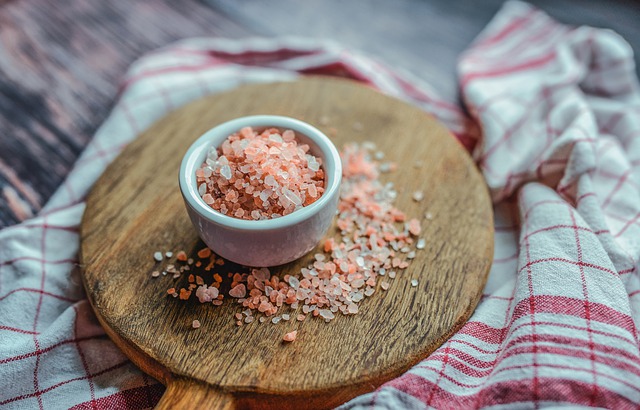
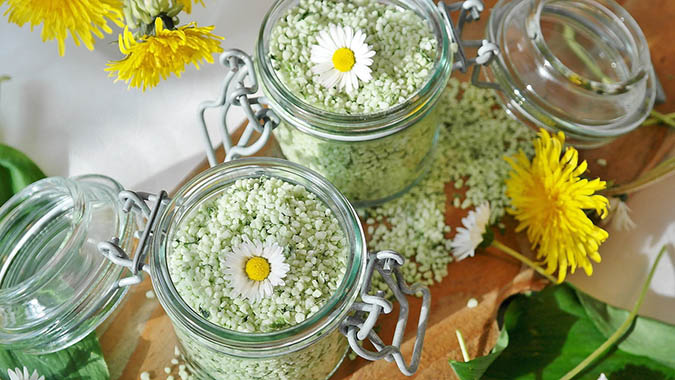
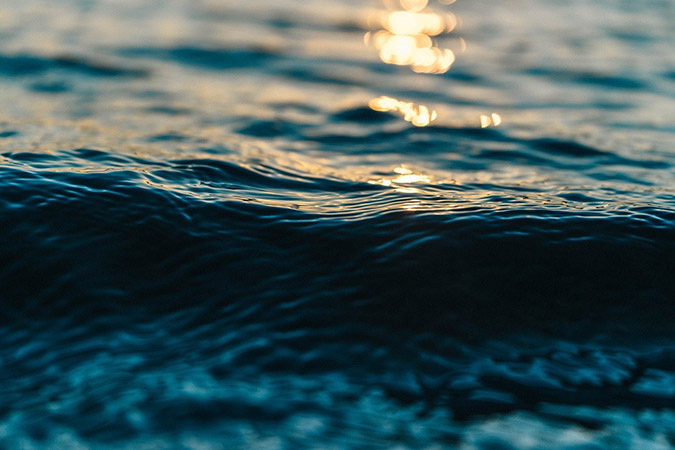







COMMENTS(5)
My favorite is Real Salt (https://redmond.life/realsalt/). Lots of minerals, tastes great, and mined right here in the US.
Pink salt from the US. Cool. And the website has information on using salt during fasting. Thanks for the link.
Actually, kosher salt can contain additives. I purchased some thinking it does not. When I got home and read the label I saw I was wrong and returned it. Wikipedia says about kosher salt, “Used in cooking and not at the table, it consists mainly of sodium chloride and may include anti-caking agents.”
Thanks Gary. That’s disappointing to learn, but I’m glad you let us know.
Be careful of the colored salts, many are simply dyed a particular color to get a higher price. You can tell it you suck on a few crystals and then look at them, if they look clear like glass, they were dyed and are counterfeit. Also… Regarding kosher salt. Diamond Crystal Kosher salt is pure salt, no anti caking ingredients (Diamond Crystal Kosher is the main salt recommended by most chefs). Morton Kosher salt has ”yellow prussiate of soda” aka Sodium ferrocyanide. While it is purported to have a low toxicity it is not allowed under organic certifications, and like all ferrocyanides salt solutions, the addition of an acid can produce cyanide gas (which is extremely toxic). So if you have anything containing this (like an opened box of salt you can’t return, I recommend reserving it for slug and snail abatement and buying a cooking/eating salt that doesn’t have it included as an anti-caking ingredient. One interesting note: When combined with iron, it converts to a deep blue pigment called “Prussian Blue” (not to be confused with “Persian Blue”).
https://en.wikipedia.org/wiki/Sodium_ferrocyanide